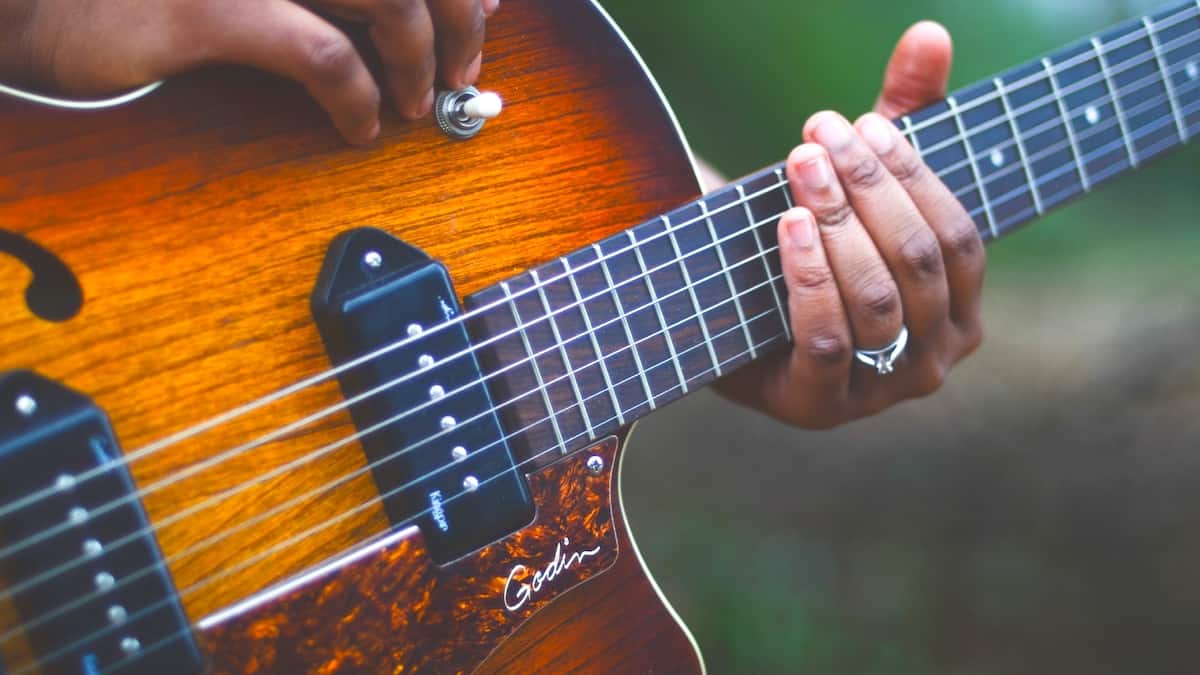Jazz Guitar Lessons
What To Know About Double Chromatic Alterations For Dominant Chords

Guitarist and educator Chuck Anderson explains Double Chromatic Alterations for Dominant Chords.
Alterations on Dominant chords are a common harmonic device used in jazz. There are 6 alterations used. They are the b5, #5, b9, #9, #11, and b13. The b13 is not typical especially for guitar because of voicing considerations. The b13 is enharmonically equivalent to the #5. This alteration does exist but you won’t see it notated very often.
Any dominant 7th type of chord can use any of these alterations as a substitute or as an extended substitute chord. Alterations increase the tension of a dominant chord. Since the dominant chord already has tension because of its tritone, this is a great way to further increase that tension.
Alterations are most frequently seen as single alterations such as C7b5, C7#5, C7b9, C7#9, C7#11, and C7b13. More advanced uses of alterations include double alterations such as C7b5 b9, C7b5 #9, C7#5 b9, C7#5 #9.
Any 2 alterations can be used in the same chord as long as they don’t contradict each other. The b5 = #11, the #5 = b13 etc. Alterations can’t duplicate a pitch already in a chord eg Cm7#9 The #9 = b3rd which is already in the chord.
An alteration or a double alteration also has to “work” with the melody. It shouldn’t conflict with the melody. It should enhance the melody.
There is special category of double alteration. It’s called a double chromatic alteration.
There are 2 of these chord types. C7b5 #5 and C7b9 #9. These are often hard to find on guitar if you are voicing your dominant chord with 4 different notes such as C E G Bb. In order to have the double chromatic dominant, you either have to leave a primary note out or develop a 5 note voicing. These are harder to systemize but even if you find a few good voicings, they are worth the effort.
Check out Chuck’s Store with books and music
More Lessons from Chuck Anderson –
Using A Dominant Substitution for Solos
What You Need To Know About Diminished Scale Fingerings and Chord Application
Helpful Tips With Symmetric Whole Tone Scale Fingering
Learn More About Double Third Chord Voicings for Guitar
Subscribe to Jazz Guitar Today – it’s FREE!
-
Jazz Guitar Lessons2 weeks ago
New JGT Guitar Lesson: Analyzing “Without A Song”
-
Jazz Guitar Lessons4 weeks ago
New JGT Guitar Lesson: Considering “Falling Grace”
-
Artist Features1 week ago
New Kurt Rosenwinkel JGT Video Podcast – July 2024
-
Artist Features2 weeks ago
JGT Talks To Seattle’s Michael Eskenazi



















